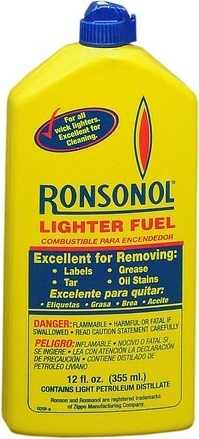Watermark Detection
Fluids
By Bob Allen
There are many ways to detect the presence of a watermark: dipping the stamp in water, lighter fluid (of which RonsonolTM brand seems to be a favorite), or any of the new "commercial" fluids prepared for the express purpose of detecting watermarks (ClarityTM comes to mind). Of course simply holding the stamp to a bright light source at various angles may be all that is necessary.
Years ago, before it was found to be a carcinogen, benzene was the dipping fluid of choice. Today, the use of this dangerous solvent would be, if not illegal, certainly very foolish, especially since cheap alternatives are available, chief among them lighter fluid. This is why lighter fluid has become a mainstay in any serious philatelists hands. Lighter fluid is cheap and, for the most part, effective and safe. There are a few stamps whose ink will bleed in lighter fluid (this is not the case for any of the US Washington Franklins for which lighter fluid is perfectly safe). We have not seen any increase in detection ability using the far more expensive commercial watermark fluids, certainly not with the US Washington Franklin stamps. The debate is out on whether lighter fluid leaves a filmy residue on the stamp. It is certain that dipping a dirty stamp in lighter fluid often has a cleansing effect, leading to another debate as to whether this "cleansing" constitutes a restoration or even an alteration of the stamp. Such cleansing in the coin world often devalues a collectible coin considerably. This is not an issue as yet in the stamp world and, frankly, we feel it never will be. However, the collector should be aware of this issue and consider it before making any attempts to "clean" a stamp. All-in-all lighter fluid is the first choice of most experienced philatelists.

Lighter fluid does have its detractors, however. It is highly flammable, has an unpleasant odor, and should be used sparingly in enclosed spaces. Commercial watermark detection fluids have the advantage of drying more quickly, are not flammable, do not have an unpleasant odor, can be used in enclosed spaces, and are safe for most, if not all, fugitive inks.
We would argue that faster drying time is a disadvantage, since it shortens the critical moment when the stamp first becomes wet and the critical moment when the stamp is just about to dry, times when the watermark often comes miraculously into view. In our opinion, commercial watermark detection fluids do NOT make the watermark stand out more clearly against the stamp, and should not be purchased for the added resolution they might provide. In fact, we have found that many of the difficult Washington Franklin single-line watermarks barely perceptible using lighter fluid, were totally imperceptible using the commercial watermark fluid, due to the faster drying time. Again, this is merely the opinion of this author, the reader is welcome to perform their own trials, but we must admit our disappointment with one of the commercial watermark fluids that did not live up to its namesake. We were quite pleased with its ease of use and lack of odor and fumes, however.





